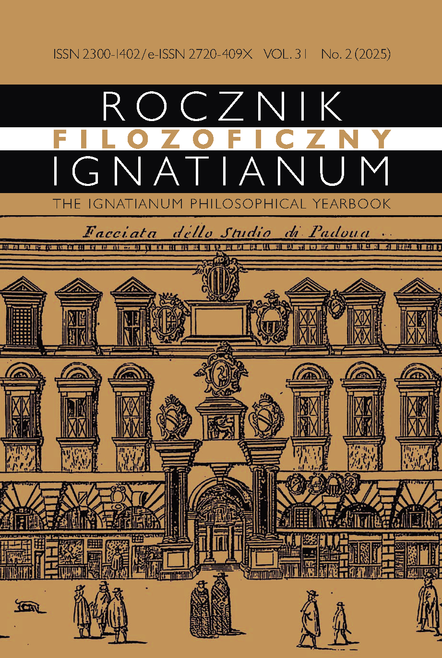Food Adulteration as Part of the Culture of Consumption
A Survey of Practices Among Food Producers and Vendors in the Polish Lands from the Mid-19th to the Early 20th Century
Abstract
In the second half of the 19th century and the early 20th century, food adulteration was a widespread phenomenon, including in the Polish territories. Although condemned and harmful, it was a part of everyday life and reflected the economic conditions, level of knowledge, availability of raw materials, and social relations of the time. Driven by the desire for profit, adulterators tampered with the composition of food products, often endangering consumers health. The article analyzes examples from daily newspapers and specialist publications that exposed and criticized the methods used to adulterate food. Virtually all types of food were subject to adulteration—from milk, butter, and tea to spices, sweets, and beverages. The examples presented in the article represent only a fragment of this widespread practice but good illustrate the ingenuity and ruthlessness of the adulterators, who employed a wide array of surprising ingredients.
References
Bier Leonard, Fałszerstwa herbaty i przypraw korzennych napotykane w Galicyi w latach 1898–1913 (Kraków: Drukarnia UJ, 1915).
Bukowski Alfons, O fałszowaniu herbaty i nowym jej surogacie (Warszawa: w drukarni St. Niemery, 1893).
Bukowski Alfons, Zafałszowania artykułów spożywczych (Warszawa: Warsz. Zw. Stow. Spoż., 1918).
Koskowski Bronisław, O hygienie kuchni i fałszowaniu artykułów spożywczych (Warszawa: Księgarnia Polska, 1912).
Moroz Aleksander, Sobieszczański Ludwik, Jak poznać fałszowaną żywność? (Kraków: nakł. Miejskiego Muzeum Przemysłowego imienia Adrjana Baranieckiego, 1932).
Serkowski Stanisław, Domowe sposoby badania produktów spożywczych (Lwów: nakł. Koła Chemików Członka Ligi Pomocy Przemysłowej, 1911).
Stanisławski Józef, O napojach pod względem policyi lekarskiej (Kraków: Drukarnia Uniwersytecka, 1848).
Berg Thomas Reinerstsen, Na koniec świata. Przyprawy, które zmieniły historię (Kraków: Znak, 2023).
Czem się trujemy? Pożyteczne wskazówki i przestrogi (Warszawa: „Ziarno”, 1905). Halbauer K., 1560 ważnych wiadomości i przepisów z techniki, przemysłu, rzemiosł, rolnictwa i gospodarstwa domowego : poradnik praktyczny (Warszawa: Bracia Szleifstein, 1867).
Krauze Stanisław, Czem się żywimy (Warszawa: 1936).
Kowalczyk Stanisław, Prawo czystej żywności. Od Kodeksu Hammurabiego do Codex Alimentarius (Warszawa: SGH, 2017).
Witowski Hipolit, Chemia w obrazkach z życia codziennego podług układu Jana Johnstona (Kraków: Drukarnia Czasu, 1869).
„Fałszowanie artykułów żywności”, Korespondent Rolniczy Handlowy i Przemysłowy 1 (1892): 4.
J.D., „Miły obrazek”, Tygodnik Kucharski 4, (1884): 26.
„Młode kartofle”. Tygodnik Mód i Powieści. Pismo ilustrowane dla kobiet 18 (1892): 143.
„Nie wiemy, co naprawdę jemy. Pieprz zrobiony z kleju i sadzy”, ABC. Nowiny codzienne 217, (1935): 4.
„Pastylki”, Tygodnik Mód i Powieści. Pismo ilustrowane dla kobiet 21 (1892): 167.
Copyright (c) 2025 Ignatianum University in Cracow

This work is licensed under a Creative Commons Attribution-NoDerivatives 4.0 International License.
The Yearbook only accepts materials for publication that are free of all conflicts of interest, and that in no way involve conflicts over authorship, copyright, etc. The Editors will take action against any cases of plagiarizing, ghostwriting1, guest/honorary authorship2, etc. Where co-authored work is concerned, the Author listed first is expected to take responsibility for the submission, and is required to make clear the contributions of all of the Co-Authors involved. In the event of the publication owing its existence to funding dedicated to this purpose, this fact should be made clear: e.g. in any note of thanks/acknowledgement, or in a footnote, etc. Explicit notification should be given of any form of reprinting, with the appropriate evidence of permission to publish being furnished as required. Any impropriety on the part of Authors/Reviewers risks exposing them to appropriate responses from the relevant institutions.
______
1 This term refers to instances of a person who has made an essential contribution being omitted from the list of authors, or from notes conveying gratitude and/or acknowledgement.
2 This occurs when a person who has made either an insignificant contribution or no contribution at all nevertheless appears on the list of authors.





